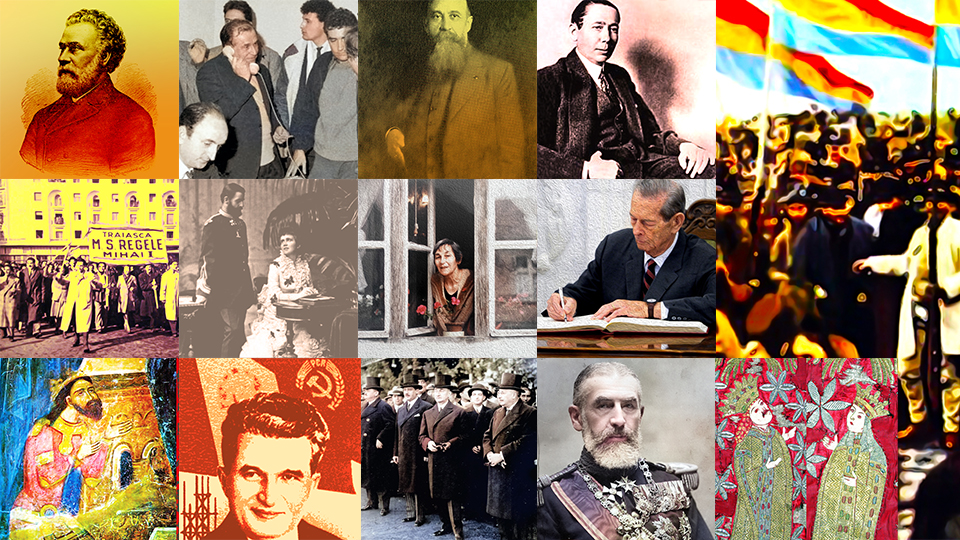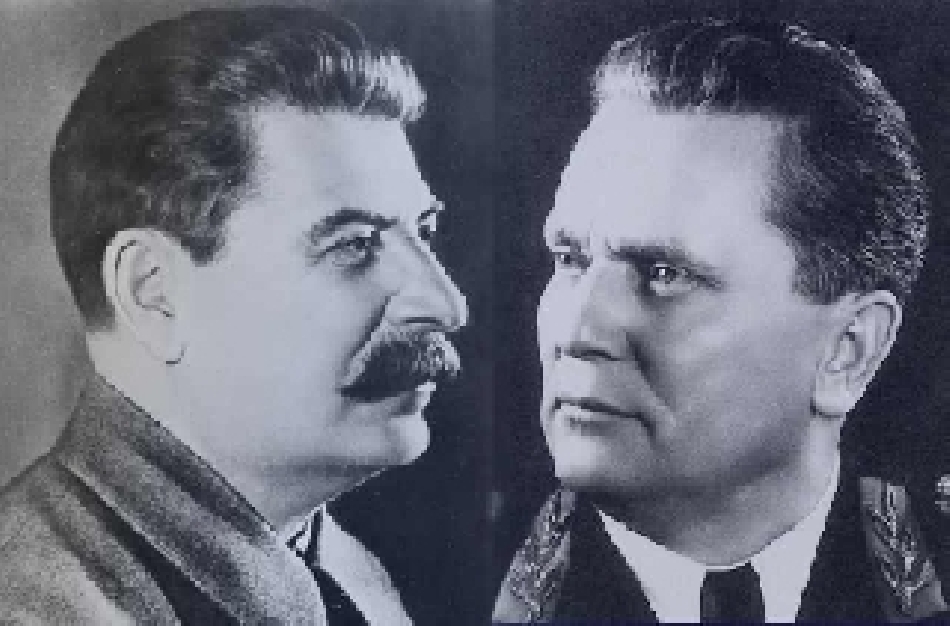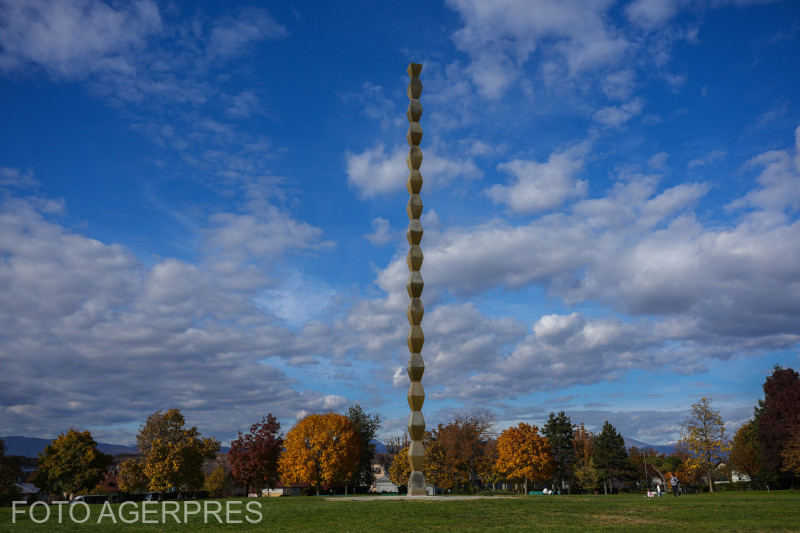Romania’s post-war communist prisons
Power and political reeducation in one of Romania's fiercest communist prisons

Eugen Nasta, 03.03.2025, 14:00
The town of Aiud, in western Romania, had acquired a dismal fame. With a population of roughly 22,000 people, the town came to be known thanks to the prison there. Aiud used to be one of the major political detention centers in the years of the communist regime.
What happened there was revealed to Romanians after 1989. 35 years on, a history of the Aiud penitentiary was published. Its author is the historian Dragos Ursu, of the National Union Museum in Alba Iulia. The book has been critically acclaimed, so far.
”The opposition of Romanian society towards communism, towards the communist regime that was instated after the second world war was, over and above anything else, an opposition of a political nature. And that, because the Romanian society, the political parties, what we generically call the civil society, Romanians in their entirety, in communism, they saw an enemy jeopardizing the very existence of Romanian democracy and of the Romanian state.
It was a regime imposed by the Soviet oppressor, it was an illegitimate and criminal regime. So, first and foremost, the opposition towards the communist regime was one of political nature and that sent the opponents of the regime to prison, they had been stalked by then the Securitate they were subject to communist repression and that is how they ended up in Aiud.
Reeducation was a form of political confrontation between the regime and the detainees, and that because the regime did not view the convicts as individuals deprived of freedom, currently placed under administrative detention, but they viewed them as enemies of the people. They still had to be suppressed in detention, they had to be subject to a dehumanizing regime through a process of political reeducation, political restructuring and psychological reeducation. “
The detained population of the Aiud prison was quite diverse. However, the prison in Aiud was known as the prison of the legionnaires. Dragoș Ursu.
” Quantitatively, Aiud is, perhaps, the most spacious prison, if we take into account its detaining capacity. Up to 3, 600 to 4, 000 people could be accommodated there, at one fell swoop, and, throughout the communist detention in Aiud, the reported number of convicts who had been there was somewhere to the tune of 14,000 detainees, or thereabouts.
While, let’s just say, qualitatively, first and foremost, in 1948, when a classification, a distribution was made, of prisons, Aiud’s fair share of detainees was made of those who we label as intellectuals, better said, of those who had an intellectual profession: public servants, people with liberal professions and intellectuals, together with those generically known as was criminals, sentenced after the second world war.
And at political level, if you will, at the level of the political pedigree, indeed, Aiud is known as the prison of the legionnaires, of those with a legionnaire political past, yet that mainly happened during reeducation. It wasn’t exactly like that throughout the detention time, but rather, they made a relative majority. Imprisoned in Aiud were, obviously, members of the other political parties as well, liberals, Peasant Party members, officers of the former royal Army, peasants who opposed collectivization, members or those who fought in the mountains as the armed resistance. “
Together with Pitesti, Gherla and the Canal, in Aiud, the so-called reeducation was enforced. It was one of the forms of extreme brutality with which the human being was treated by a regime that ostensibly claimed to be the most caring for the human beings. Notwithstanding, Dragoș Ursu identified differences between types of reeducation.
” We can see the mirror image of Pitesti, the reeducation phenomenon in Pitesti which later expanded to Gherla and the Canal, the phenomenon of violent reeducation, or extreme violence par excellence. However, in Aiud, we can speak about the tardier reeducation after the second repressive wave, the repressive wave that came about after the revolution in Hungary, where the regime uses means and instruments having to do more with psychological reeducation, with psychological warfare, with cultural reeducation.
Therefore, it does not bluntly and openly use violence, torture, and that, for very practical reasons: the convicts who became subject to reeducation were people who had been detained for 10, some of them for 15 years, so they were exhausted, physically, psychologically, morally. So the slightest form of torture, of physical violence, would have finished them off, they would have succumbed in reeducation, so the process would not have met its set target.
And that is what crucially sets Aiud apart. Pitesti was a violent reeducation, yet reeducation in Aiud pertains more to the psychological, ideological and cultural register the regime uses in its attempt to draw convicts on its side, nay, to get them lay bare their own political past. That was the way they compromised themselves, personally, confronting their own identity, and in front of their inmates so that, when they would be released, they could not reactivate themselves politically, they could not resume their political activity.
What is Aiud’s legacy in the collective memory? Dragos Ursu.
”The reeducation in Pitesti, implemented through forms of extreme violence , unimaginably brutal and barbaric, granted absolution to the victims. And because, faced with extreme violence, human nature gives in, in most of the cases. And then, at the level of memoir literature, of the memorialist testimonies of those who survived, those who use such a phrase, somehow unjustly, in our opinion, the people of today, ‘they fell in reeducation and were reeducated’ they saw moral absolution precisely because extreme violence endorsed something like that.
However, in Aiud, precisely because reeducation was predominantly psychological, that fragmented the unity of memory. And we can see how the memorialists, the survivors stage heated debates, they convey the feeling of guilt of those who somehow took sides with the regime.
Which places the reeducation in Aiud under a different category. And somehow, from this standpoint, we can say the regime succeeded to sow the seeds of suspicion and tension among convicts, back then, during the reeducation program and later, at the level or memoir literature, in those who survived and wrote about all that.
Which is hardly the case in Pitesti because there memory is much more unitary and convicts understand each other because they had been going through extreme violence. However, Aiud is somehow different. “
The prison of Aiud now has a monograph bringing to present-day readership a time and a place where the communist regime excelled as an inhuman regime.






























